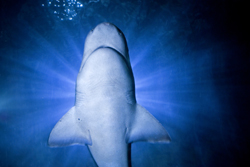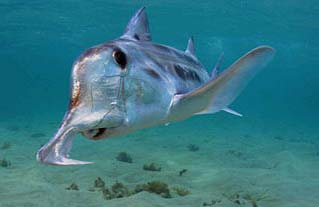 SMILE’s August newsletter was all about sharks and hands-on ocean literacy activities, and Kim Lightle of the Middle School Pathway reposted some of our “fishy facts” on her NSDL blog.
SMILE’s August newsletter was all about sharks and hands-on ocean literacy activities, and Kim Lightle of the Middle School Pathway reposted some of our “fishy facts” on her NSDL blog.
So far, so good. But in researching sharks, I came up with so many cool and gruesome tidbits that I can’t keep them to myself any longer. In the interests of education and just plain fun, here are a few more shark facts.
1. Newborn sharks are called pups.
2. Shark mothers do not feed their babies. They must survive on their own. And yes, it’s true: some baby sharks (like sand tiger sharks) do eat their brothers and sisters before any of them are born. The first one or two pups that hatch from the soft eggcases gobble up their all their unhatched siblings. And you thought the sibling rivalry in your family was bad.
3. Not enough eligible male sharks to go around? Try parthenogenesis. This type of asexual reproduction was first observed in a captive hammerhead in 2001 but more recent research shows that the incident was not exceptional and that sharks born from a virgin mother can survive for many years. In parthenogenesis, females' eggs start dividing without being fertilized. This produces daughters that are genetically similar to the mother, though they don’t tend (like humans) to dress in matching outfits.
4. The male ghost shark (pictured at right) has a sexual appendage on its forehead. This one’s a bit of a stretch, since the ghost shark is not a true shark. But as a member of the Hydrolagus melanophasmaisfamily, it’s a distant relative, one that you might not want to invite to Thanksgiving.

